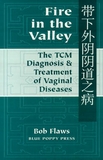Acupuncture & TCM Articles
How You Can Use Acupuncture For Endometriosis To Ease Your Pain
Author: Shelley Ross
When therapists and enthusiasts are asked about the effectiveness of acupuncture for endometriosis the topic of pain relief often comes up. This is because endometriosis pains are so varied and differ wildly from woman to woman.
Endometriosis is often difficult to treat even with today's advanced pain medication. According to acupuncture therapists and enthusiasts, however, although acupuncture will not treat endometriosis entirely, it can help relieve the pain that comes with the disorder.
Women who suffer from endometriosis often report severe abdominal cramps, a feeling of heaviness especially in the pelvic area, and disabling, crippling pains in the lower back.
This is because endometriosis involves the migration of endometrial tissue normally found in the uterus, to other parts of the body. Each month as hormonal changes encourage the tissues to swell and then shed, instead of being expelled as menstruation, the blood and tissue lodge in various organ systems, causing internal bleeding, intense pain and even disruptions in normal bodily functions.
Because the cause of endometriosis is unknown, it is difficult to treat with only one form of therapy. Physicians will often recommend various drugs, including those that can help manage pain, and those that can lower the levels of estrogen in the body. Acupuncture contributes to therapy by allowing patients to relax better, and to deal with pain more effectively without resorting to medication.
If you are suffering from endometriosis and do not want to take more medications to relieve your pains, then you may wish to consider acupuncture.
Acupuncture makes use of tiny needles inserted into strategic parts of your body, with the aim of redirecting the universal energy field, called chi. When redirected, chi can allow you to be healthier and more relaxed. With greater relaxation, you can perhaps learn how to handle your pain better.
Before you go to an acupuncturist, however, you will need to consult with your doctor first about what other therapy options are available to you. This is especially advisable if you have a fear of needles, or if you are highly skeptical about acupuncture. If you do undertake acupuncture therapy, however, then these tips can help in your search for an acupuncturist.
? Ask your physician for referrals. Many obstetricians and gynecologists will be in touch with acupuncturists who offer relaxation or pain relief therapy. These acupuncturists will also be licensed and legal, so you can be sure that you are receiving treatment from a qualified practitioner.
? Join an email group or forum for people suffering from endometriosis, and ask around about acupuncture therapy. There will most likely be people present who have undergone the therapy to deal with their own endometriosis-related pains, and they can offer you tips on where to go, who to see, and what to do.
? When you arrive at the acupuncturist, ask as many questions as you can. This is a good way to do research on acupuncture. Besides, a good, licensed acupuncturist will be happy to answer your questions, offer reassurance and be more than willing to help you. Try and find a practitioner who has knowledge and experience of dealing with endometriosis.
? Share your good experiences with members of your email group or forum. You can help other endometriosis sufferers in dealing with their own conditions.
Discover more information on natural alternatives for treating endometriosis by signing up to the newsletter below.
For those who practice acupuncture, endometriosis is not necessarily easy to treat. The many pains can blind patients to the possibility of being able to deal with the difficulties of the disorder. However, with positive experiences, and with more acupuncture for endometriosis therapy sessions, the pains of endometriosis may lessen significantly.
 Fire in the Valley: Fire in the Valley:
The Traditional Chinese Medical Diagnosis and Treatment of Vaginal Diseases
by Bob Flaws
DESCRIPTION: This book is a collection of translations from classical and modern Chinese sources on the diagnosis and treatment of diseases of the vagina, cervix, and external genitalia. Herbal and acupuncture protocols are given for vaginitis, cervicitis, cervical erosion, herpes genitalia, vaginal itch, yeast infections, venereal warts, abnormal vaginal discharge, bartholinitis, Naboth’s cyst, and more.
Dai xia is usually translated as abnormal vaginal discharge or leukorrhea. Dai means belt or girdle and refers to the dai mai or belt vessel. Xia means down or below. Traditionally, Chinese doctors specializing in gynecology were often called dai xia yi or dai xia doctors and dai xia ke or specialty in dai xia was a synonym for gynecology or problems below the belt. To this day, if one asks what constitutes traditional Chinese fu ke or gynecology, the answer is jing dai chan hou or menstrual complaints, dai xia, and pre and postpartum conditions. Zhang Zhong-qing's Jin Gui Yao Lue (Essentials from the Golden Cabinet) is the first Chinese medical classic to contain a chapter specifically devoted to gynecology.
| 